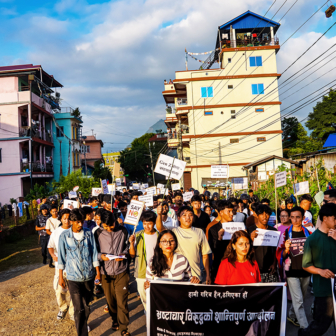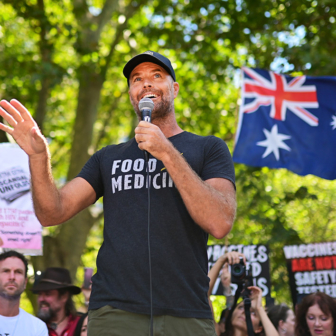When British novelist L.P. Hartley famously wrote that “the past is a foreign country: they do things differently there,” he clearly wasn’t thinking about the Australian telecommunications sector. While the extent of technological change over the past century has been astonishing, and the Postmaster-General’s Department, or PMG, once responsible for national telecommunications and postal services, has long made way for a competitive marketplace (of sorts), the parameters of the policy debate have remained relatively static.
At the core of Australian telecoms there has always been a conundrum. How best can services be delivered to country areas at prices comparable with those in the city when the cost of providing and maintaining rural services is dramatically higher? The issue surfaced once again in the lead-up to the 2007 federal election when the Labor opposition, and then the Coalition, released competing plans for national broadband services.
Following the 2013 election, communications minister Malcolm Turnbull announced a flurry of reviews into the Rudd government’s National Broadband Network. This included commissioning a “panel of experts,” chaired by former Victorian and Tasmanian Treasury head Michael Vertigan, to “analyse the economic and social costs and benefits” of various NBN broadband and technology scenarios.
The Vertigan report was released late last month. Among other things, it calculated that the cost of rolling out fixed, wireless and satellite services to rural and remote areas was $4.8 billion for benefits of just $600 million. In doing so, the report kicked off the latest round in this perennial debate.
Of course, the commitment by governments of all political persuasions to provide affordable telecoms services to country areas has always been at least as much about notions of nation-building and national civic cohesion as economics. From federation, national governments sought – via the PMG – to ensure that rural and remote areas had the communications infrastructure necessary to develop self-sustaining and decentralised communities.
Telecoms services went to the heart of social relationships and enabled the connectedness of country people with each other and the wider Australian community. In the words of Robert Anderson, who was commissioned by the Labor government in 1915 to review the PMG’s operations, the department came “more intimately in contact with the human life of every person than any other institution can possibly do.”
So the question has been less about whether government should ensure affordable telecoms services in uneconomic areas than about how to fund them. And for the bulk of Australia’s history, the answer has involved opaque cross-subsidies susceptible to political manipulation.
As technology advanced and the nation’s telecoms network expanded during the Coalition’s long postwar reign from 1949 to 1972, Country Party MPs excelled at channelling telecoms equipment and funds to rural areas and burying the ever-spiralling costs within the PMG’s impenetrable network of cross-subsidies. They were so successful that long-serving Liberal postmaster-general Alan Hulme reportedly warned cabinet of a looming “financial disaster.”
The more transparent and ultimately equitable way for governments to deliver commercially unviable services is by direct subsidy. Over the years, support for this model in the telecoms sector has made for some curious bedfellows.
For example, before the 1972 “It’s Time” election, Gough Whitlam called for uneconomic telecoms services to be provided “by open rather than covert means.” Later, with support from Treasury and the nascent free-market lobby, the Fraser government’s Davidson inquiry into private sector involvement in telecoms recommended that Telecom (the PMG’s government-owned successor) act only in its commercial self-interest. If government wanted uneconomic services, Davidson said, then it should pay for them itself via direct subsidy.
Earlier this year, the Australian Competition and Consumer Commission argued that commercially unviable NBN services should be funded by direct government subsidy. And in Vertigan’s wake, Turnbull acknowledged that direct subsidy was the optimal way to fund these kinds of policy objectives – though, with welcome candour, he immediately ruled it out in the NBN’s case because it was “not something that my colleague the treasurer would be very excited about.”
This is the crunch point. With the notable exception of the cashed-up fourth-term Howard government’s $958 million rural broadband initiative (killed at birth by the Rudd government after the 2007 election), governments have been unwilling to go down a large-scale direct subsidy route for telecoms services. The reason is simple: the desired outcome can be achieved without political or budgetary pain by “taxing” other telecoms service users through the prices they’re charged.
Since the onset of competition in the early 1990s, governments have sought to make the funding of basic telecommunication services more transparent via the Universal Service Obligation arrangements, in which a specific dollar figure is assumed to be the cost of providing uneconomic services. But calculating this figure has always been highly contested and often arbitrary, and in any case mostly involves the same kind of tax on other users rather than direct funding by government.
For uneconomic NBN services, though, the Gillard government turned the clock back twenty years in the aftermath of the 2010 election. In exchange for the backing of two rural independents, it agreed that nationally uniform prices would be funded by a good old-fashioned cross-subsidy.
Turnbull has suggested that he may require NBN Co to put a dollar figure on its cross-subsidy so that there is at least some transparency about the cost of providing commercially unviable services. Perhaps this will be the latest political compromise for a project, and a sector, that has been built on them. •




